Nobody who visits Maramures comes back disappointed. Nobody. Here is an excellent list of things to do in Maramures for everyone to enjoy.
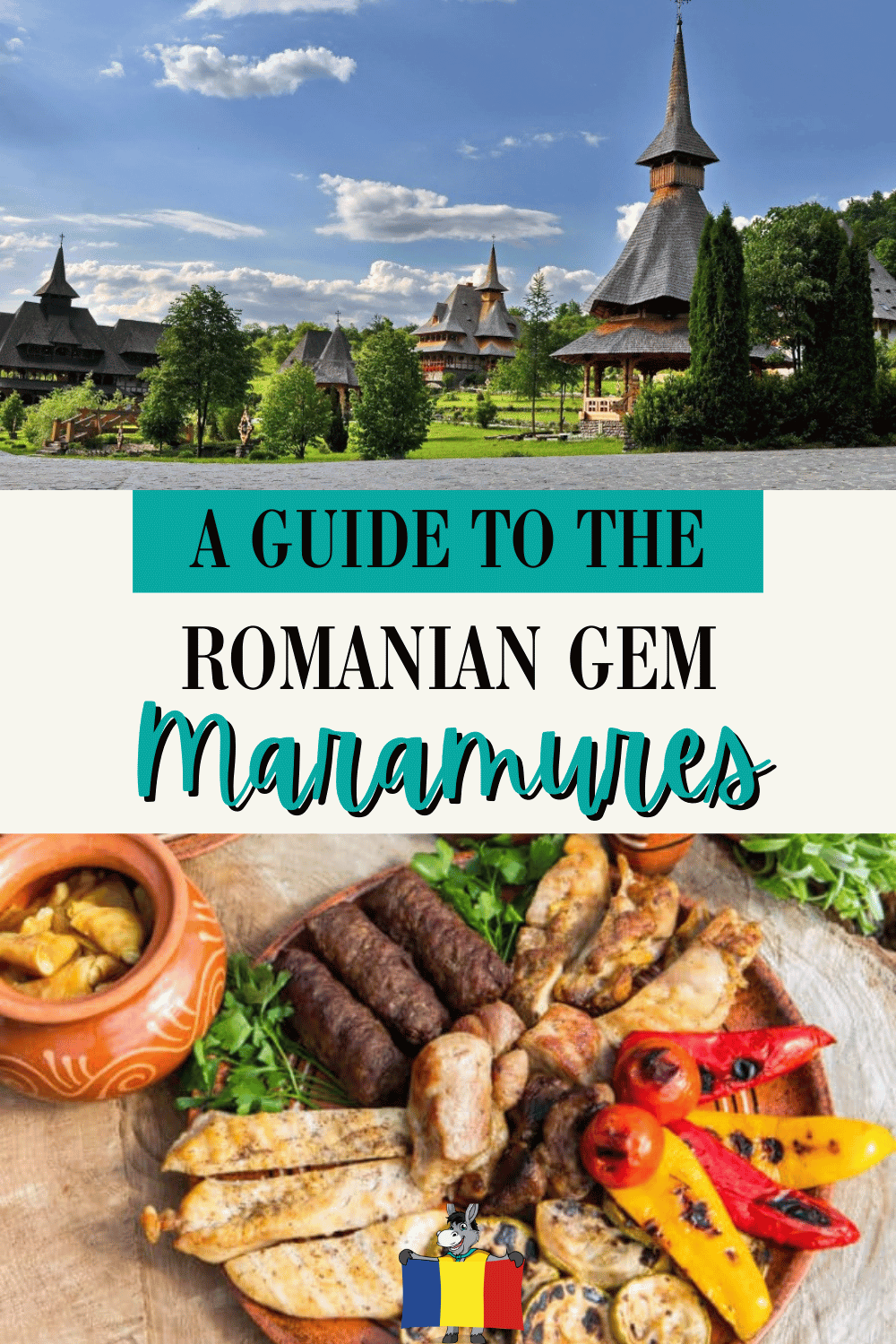
Skip Ahead To My Advice Here!
Visit Maramureș, A Romanian Gem
When you say Romania, most people think Transylvania is a major attraction here. Yes, Transylvania has its pluses, and nobody can deny that.
But once you start reading more about Romania and its other regions, you discover that each one of them has something appealing. Maramures, the northern part of Romania, will offer you more than one reason to come here.
It is considered a place with unspoiled nature and well-preserved traditions, a place where people can enjoy food and landscapes as they were 100 years ago.
Before traveling here, it is better to do your homework and learn when is the best time to visit, how to get there, where to stay, and what things you can do in Maramures.
Three days is enough time to visit all the main attractions. But if you want a relaxing holiday, plan a whole week. You will have time to enjoy walks in the forest, easy hiking, and traditional activities.
Things To Do In Maramures, Romania
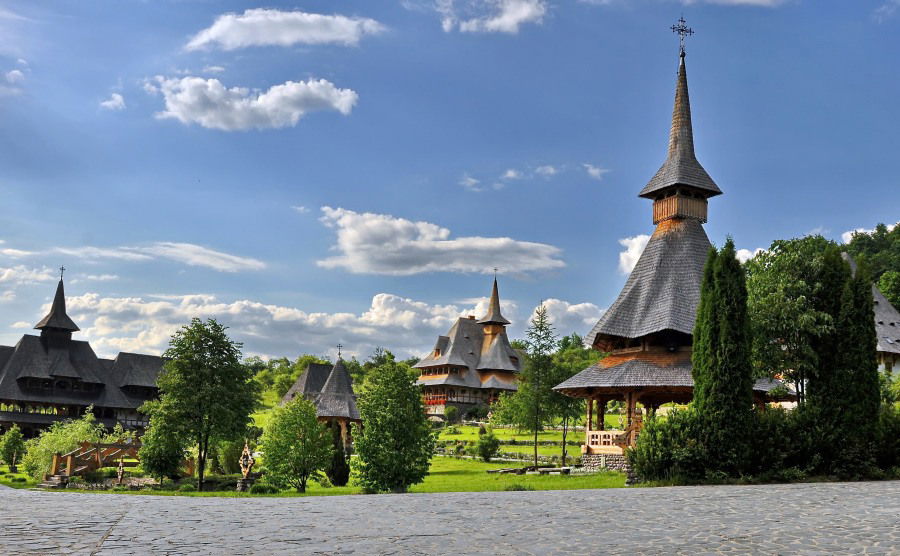
The best thing to do in Maramures is to relax. Enjoy the quiet life here, the nature charging your batteries, and the good, natural food. Not many corners around Europe are so well preserved, which is something Maramures can take pride in.
But besides relaxing, there are other things to do here and places to visit for a complete experience.
1. Visit The Wooden Churches Of Maramures
The wooden churches in Maramures are known for their impressive architecture and old history. Even though almost every village has a wooden church (more than 100 wooden churches in the region), only 8 are UNESCO heritage, and some were built 400 years ago.
These eight churches are tall and narrow and were built using a specific technique to combine wood. Not all of them can receive visitors daily, so it is good to know which one to choose because getting to them takes some time. I recommend you visit the Barsana Monastery and the wooden church in Desesti.
Barsana Wooden Church
The most visited wooden church is the Barsana monastery (comuna Barsana, nr. 6, Romania). It was built with oak wood at the beginning of the 18th century and had a very tall bell tower (around 57 meters). It has an interesting story because it was moved twice from its original location. Around 1806, it was moved to where it can be found today.
Local painters painted it inside; today, it is part of a group of buildings that form the Barsana monastery. You can visit it every Monday through Friday, 8 am—9 pm.
Desesti Wooden Church
The most accessible wooden church is the one in Desesti, and you can visit it from Baia Mare to Sighetu Marmatiei. It doesn’t have official opening hours, but if you get there and find the door closed, you can contact the person in charge by phone (his phone number is written on the door). The painting inside, very well preserved, illustrates scenes from the Bible (very interesting is the one about the fire in hell and the tortures suffered by the ones getting there).
The other six wooden churches of UNESCO heritage are in Budesti, Ieud, Plopis, Poienile Izei, Rogoz, and Surdesti. If you like these types of monuments, you can visit them all, but plan your trip carefully because not all the roads are accessible, and you will need more than a day to do that.
2. Take A Walk In The Merry Cemetery

Another popular attraction in Maramures is the Merry Cemetery in Sapanta. Once upon a time, there was a man who hated death. That man was Stan Ioan Patras, and he decided to continue Dacia’s lost tradition. This is how the story of this cemetery begins.
The Dacians (Romanians ancestors) believed that death was a happy event because they could meet their major God afterward. Stan Ioan Patras started to design colorful crosses when someone died, and he wrote a short poem on the cross about the life of the defunct. After Stan Ioan Patras died, his disciple continued his work.
Today, almost 800 painted crosses can be found here. The most important ones have a sign on them so they can be easily spotted. This is how the Merry Cemetery was created.
Some of the poems are very interesting (for the whole experience, ask someone to translate them for you), but after visiting this place, you still feel sad. The creator of the Merry Cemetery is buried here, just in front of the church.
3. Roam Around The Local Villages
The many villages in the Maramures region are very close to one another, so you can easily visit them during your stay. You can choose to walk in a leisurely manner, or you can cycle. There are many places to hire bicycles, so you’ll have no issues.
Seven villages weave through protected areas, covering 88km. All routes are marked, so you’re not going to get lost!
If you prefer to cycle, the Rooster’s Crest Trail and Rooster’s Trail are the most difficult, with the latter covering 22km. The Rails’ Trail is a good option for those who don’t want to break too much of a sweat, covering 20.8km.
4. Discover The History Of Communism At The Memorial Of Suffering In Sighetu Marmatiei
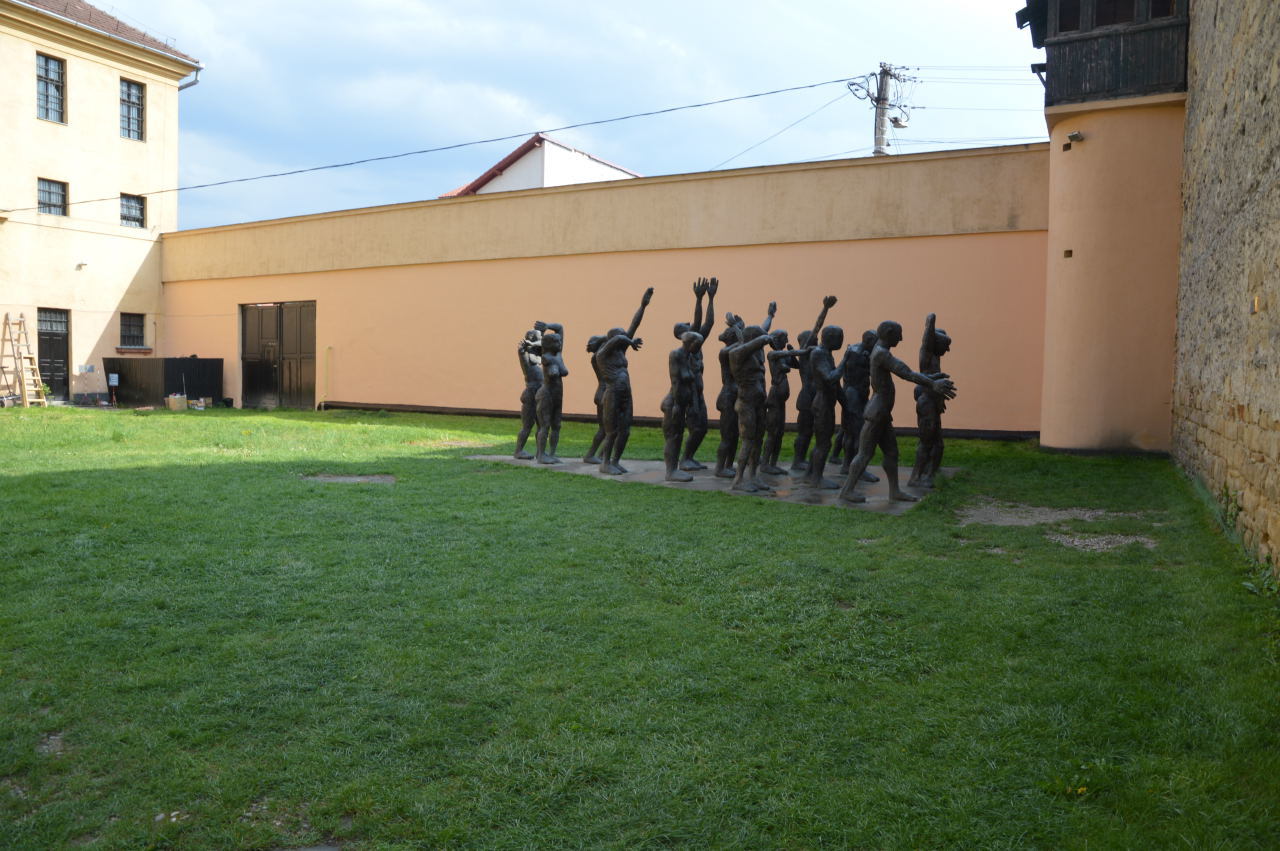
The Memorial to the Victims of Communism and Resistance was opened in the old communist prison in Sighetu Marmatiei. Here, you can learn what communism meant in Romania, how it was established, and what happened to people who fought against it. At the entrance, you can read the same motto written in Auschwitz: “Those who cannot remember the past are condemned to repeat it.” George Santayana.
For those interested in the history of communism, visiting here is a must. All notes are in Romanian, but you can find some printed materials in English. After you visit the prison, go in the backyard to see a sculpture: a group of people pushed by a headless body, representing the repressive system.
5. Sighetu Marmatiei
After checking out the Memorial to the Victims of Communism, I think the town of Sighetu Marmatiei is worth exploring further.
This town first came to prominence in 1325, and it’s thought to be the first and only town in the whole of Maramures. The town has certainly seen its fair share of history, with communism and Nazi rule scarring the area.
Be sure to check out the Village Museum, where you can learn about this beautiful town’s history.
6. Buy Handcrafted Goods
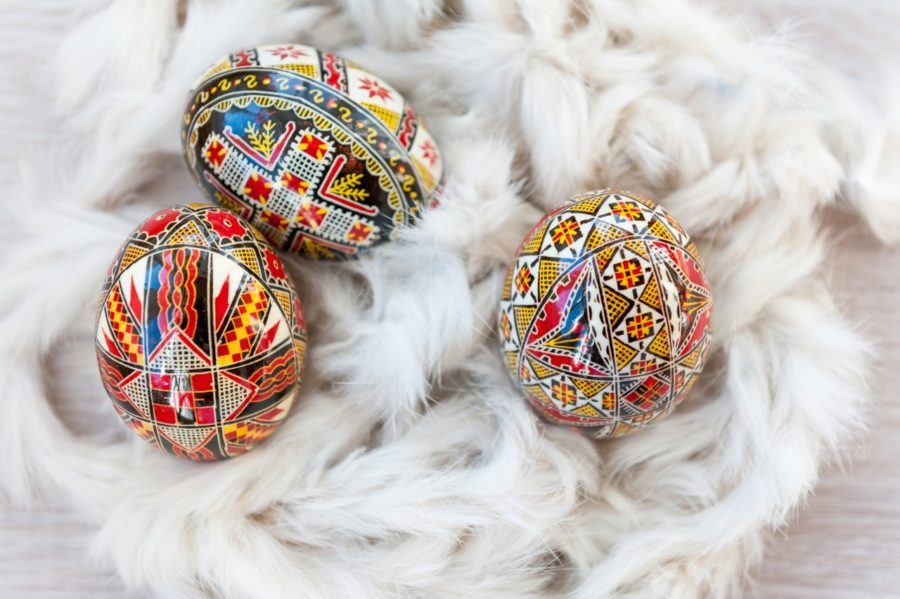
In the many villages, you’ll find craft stores and stalls that sell handmade goods. These are ideal for taking back home as gifts for loved ones. As a few starting points, you’ll find plenty to check out and purchase in Sarbi, Barsana, and Botiza.
Locals are only too happy to let you watch as they go about their work and explain what they’re doing as well as they can. You will probably be mesmerized watching them!
7. Put On Your Hiking Shoes
It’s the local villages you should wander around and the mountains too. You’ll surely need your walking boots, but don’t let that stop you.
The Rodnei Mountains are the second largest national park in the country, and if you’re up for a challenge, you’ll see some fantastic scenery by taking a day’s exercise. Otherwise, Maramuresului Mountains Nature Park will still give you amazing things to see but with less effort.
8. Take A Ride With The Steam Train
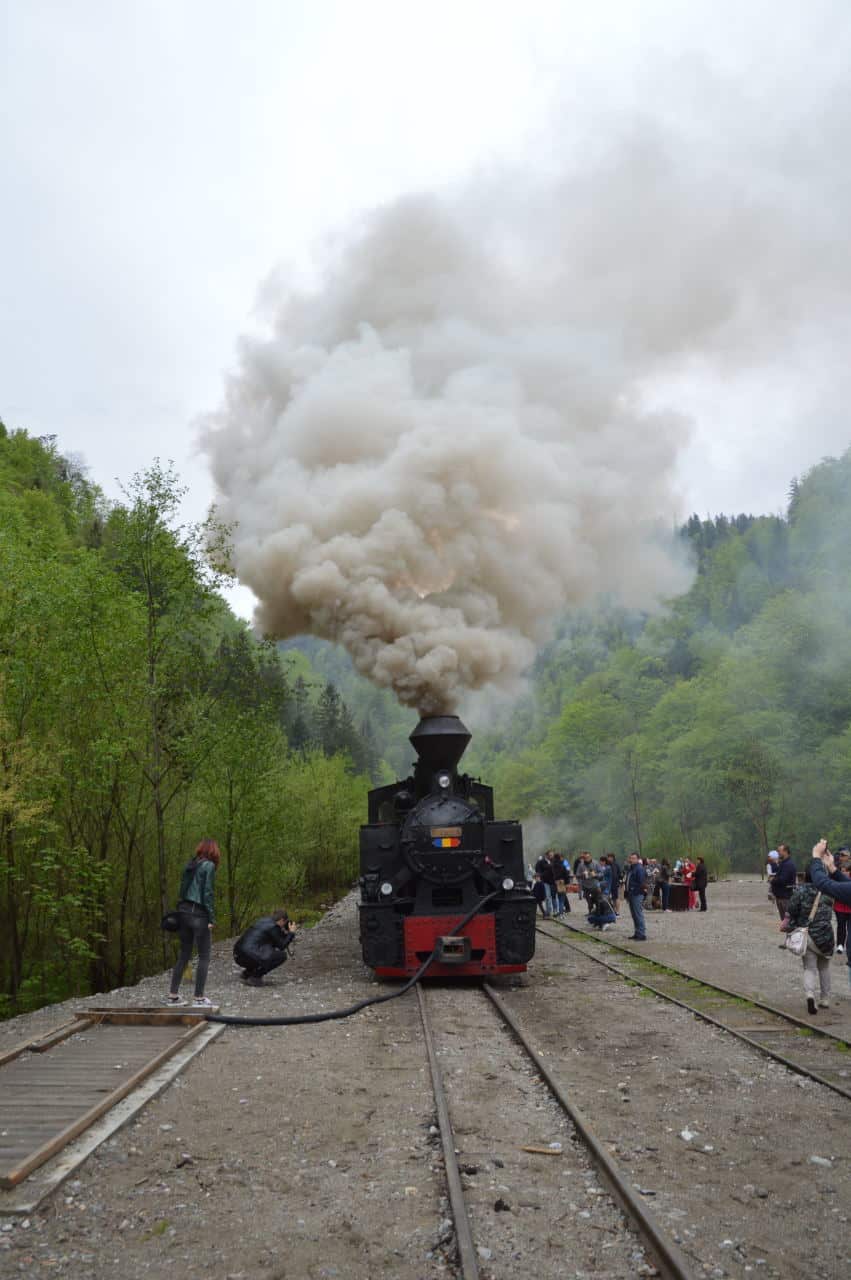
My favorite experience in Maramures is the steam train ride. Every morning, from Spring to Autumn, an old steam train called “Mocanita” departs from Viseu de Sus.
The trip takes around half a day. After a two-hour ride in the wilderness of Northern Romania, you will arrive at a green meadow, where you will stop for another two hours.
Here, you can visit the small train museum, have a traditional lunch, listen to local music, or lie down and breathe the fresh air—there are no restaurants, cars, or phone signals—just a morning in the middle of nature to relax you. The steam train ride is a popular attraction, especially during Summer, so book your ticket in advance.
While you explore this fantastic region, occasionally admire the traditional villages and old houses with big wooden gates and walk in their isolated lanes.
9. Ride A Lift To Horses Waterfall
Head to the Borsa Tourist Complex for a chairlift ride up into the Rodna Mountains. Once at the top of the lift, take a quick 30-minute hike to find Horses Waterfall, a 90-meter-high fall flowing in the mountains.
If you are feeling adventurous, continue taking the path until you reach Stiol Lake, a breathtaking glacier lake.
10. Join A Carpentry Workshop
In Barsana village, visit Teodor Barsan’s carpentry workshop. Teo makes artisan custom wood creations for customers worldwide and often offers carpentry workshops onsite for visitors.
11. Try Local Cuisine
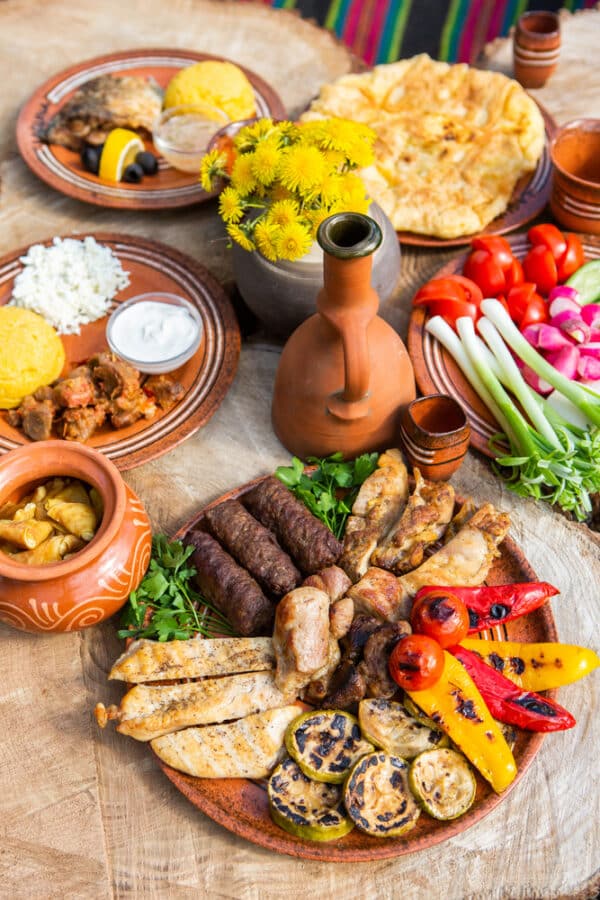
You’ll undoubtedly enjoy filling up on local cuisine, although if you’re on a diet, you’ll probably want to take a day off! Dishes here are famously quite heavy but shouldn’t be missed, many including meat and cheese. Meat eaters will enjoy sampling Caltabos, Slanina, and Toba, while vegetarians have several options, including vegetables cooked in different ways or salads.
For lunch and dinner, consult the menu before choosing a particular restaurant. Some serve only traditional dishes, while others offer salads and lighter fare.
12. Explore The Town Of Baia Mare
Head to the town of Baia Mare one morning. Spend time wandering around the Old Town Square and Stephen’s Tower.
While in town, check out the little-known mineralogy museum. Here, you can admire over 20,000 mine crystals, rare minerals, and gems.
Brands We Use And Trust
When Is The Best Time To Visit Maramures
When you decide to visit Maramures, consider that winter is winter (with snow and maybe freezing temperatures), and summer is summer (temperatures around 35 degrees Celsius). And that applies all over Romania.
Spring or autumn is probably a good choice if you are not a big fan of extreme temperatures. These seasons can be rainy but also full of beautiful colors. Autumn is even more colorful than Spring: all shades of red, yellow, orange, and green can be seen! To see the blossom trees and green gardens, book your trip in Spring. During Easter, you will have the chance to see some of this region’s traditions: painted eggs, traditional costumes, and delicious food.
Summer is the holiday season. It may not be as warm here as in a big city, but summer in Romania is hot, and Maramures is no exception! It may be a little more crowded than usual, but only at the main attractions. But it is the perfect time to enjoy nature and mostly stay outside as much as possible! The hills, gardens, and forests will be just yours!
Winter can be tricky here. If you don’t like snow, I don’t recommend winter at all! But if you don’t have a problem with cold weather, Maramures will reward you with fantastic white views. Christmas is another great moment to experience the local traditions.
The only thing with winter is that if you decide to come in January or February, some attractions are closed, or their winter schedule is short. Once you have determined the best time to visit this exciting place, it’s time to choose how to get there.
How To Get To Maramures

Before planning your trip to Maramures, it is good to know that you will need a car to explore this area. Whether renting one, coming on your own, or booking a guided trip, a car is necessary to reach the main attractions. Maybe that is why the region is unspoiled: it is not easily accessible.
Getting To Maramures By Plane
The closest airport is the one in Baia Mare (the central city of the region), named “Maramures Airport,” but international flights don’t land here (yet). Another airport is the one in Cluj Napoca. It will take you around half a day to get from Cluj Napoca to Maramures, but the airport in Cluj is not very big either.
The two options with enough international flights are Bucuresti, Henri Coanda, or Budapest. Of course, you will need a day by car to get from Bucharest/Budapest to Baia Mare or another flight.
But most tourists stay in Bucharest and tour Romania, including Transylvania and Maramures.
Getting To Maramures By Train
Another option is to take the train from Bucharest (or any other major city in Romania) to Baia Mare. The ride takes around 13 hours, which is not your best option. But if you choose it, you can book your train tickets online.
Getting To Maramures By Bus
If you land in Bucharest, you can also take the bus, which will take 13 hours to arrive at Baia Mare. The bus is also an option for exploring the region for those who don’t like driving and do not want a guided tour.
It will only take you near the main attractions, but the bus schedule won’t allow you to see as many items as possible by car. Also, some attractions are not reachable by bus. It would be best to consider all these conditions before deciding the best way to travel to Maramures.
After establishing how to get there, you must choose where to stay in Maramures.
Move This Adventure To Your Inbox & Get An Instant Freebie

No spam. Unsubscribe at any time.
Where To Stay In Maramures
Sighetu Marmatiei, a small town in the north, is an excellent base from which to explore the region. All the tourist attractions are easily accessible.
You can find good hotels and B&Bs. If you want to stay in the countryside, choose one of the many pensions. Most are traditionally decorated, but you still have some options if you prefer luxury accommodation. The best part about these pensions is that they have massive gardens. You can lie on the grass and listen to nature’s sounds all day.
Not all offer breakfast, and not all have restaurants. If you want to start your day early, choose accommodation with breakfast included.
FAQs For Your Trip To Maramures
What are the recommended sights in Maramureș, North Romania?
The Bârsana Monastery, local villages, particularly Sârbi, traditional festivals in Maramureș, the traditional water-actioned mechanical systems in the Sârbi, the historical sites in the Breb village, the Merry Cemetery in Sapânța, the Peri Monastery, the Sighet Village Museum, and the Horses Waterfall.
What can I do at the Bârsana Monastery?
Visitors can admire the beautiful architecture and gardens that the monastery has to offer.
What activities are available in local villages like Sârbi village?
You can experience authentic cultural interactions with artisans and locals.
What are the annual traditional festivals in Maramureș?
Annual traditional festivals and celebrations are usually associated with important dates in the Orthodox calendar and often involve traditional costumes, dance, and music.
What unique tradition can be found in Sârbi village?
The village is known for maintaining traditional water-actioned mechanical systems.
What attractions can be found in Breb village?
Historical houses tied to Prince Charles and the old Archangels Michael and Gabriel church are key attractions.
What is special about the Merry Cemetery in Sapânța and the Peri Monastery?
The Merry Cemetery is known for its colorful and descriptive tombstones, while the Peri Monastery is known for being the tallest wooden church construction in Europe.
What can be seen at the Sighet Village Museum?
The museum displays traditional Maramureș wooden houses and farm buildings.
What is the Horse Waterfall?
It is a natural attraction accessible via a chairlift and a short hike, and it is known for its stunning landscape.
Nobody who visits Maramures comes back disappointed. Nobody.
Discover this land where it seems like time stood still.
People are astonished by its beauty and thrilled that it seems so isolated and still. In a world full of gadgets, speed, and big cities, visiting here is like a breath of fresh air, a trip back in time.
Are you ready to take this trip? What are your things to do on the Maramures list?


I would like to plan a trip to my mom’s birthplace. She was born in what was Tisa Vereshmort, in Maramures, Romania. I can’t find this on a map. her home had a well on her property. She called her home Mikif before she left in 1940. Any ideas or tips are appreciated. I tried googling the area, other than an old map nothing comes up for me.
Thank you,
Es Goodman
Kudos for giving Maramures, Romania some well-deserved love in your blog!